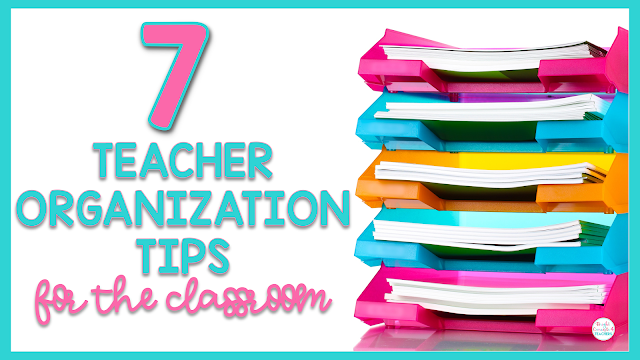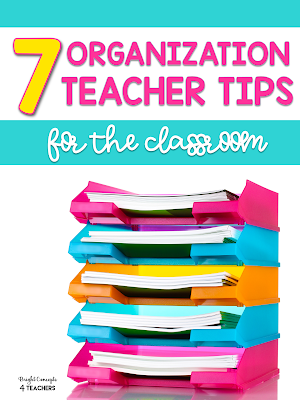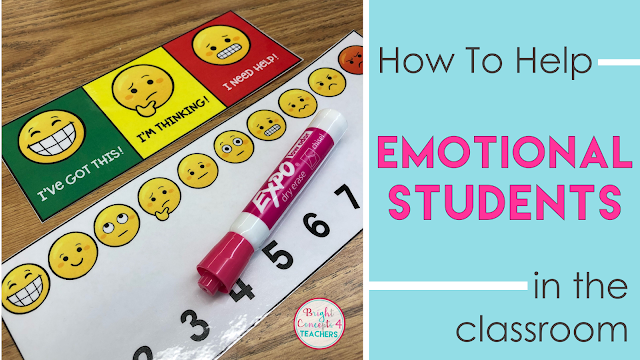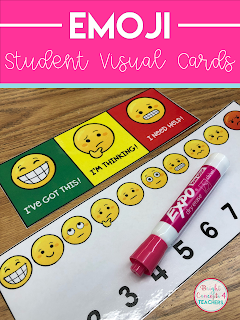Staying organized just makes things easier. When you are organized everything runs smoother. No lost instruction time, smoother transitions, better behavior from your students, and less stress!
This post contains affiliate links for your shopping convenience. By purchasing an item using these links, I will receive a small commission on your purchase. For more information about my Disclosure Policy, please visit this link.
#1 STICK TO A SCHEDULE
It is extremely important to have a daily schedule that is consistent. You need to have a general idea of what is going to be happening and when throughout each day. For example, language arts is always first thing in the morning. After recess is writing and grammar. After lunch, math and social studies or science. This not only helps you, but your students, as well.
#2 POST A DAILY AGENDA
Now that you have established a general daily schedule, it is time to be more specific. I always post our daily agenda on our classroom white board. I go over it at the beginning of the day with my students. This not only helps them to know what we will be doing throughout the day, but myself as well. I do NOT put times. Times just make everyone anxious. I tell my students this is our general plan for the day. If we don't get to something, it is OK.
#3 KEEP A PLAN BOOK
It never fails that your admin comes in and wants to see your plans at all the wrong times, like during transition or your whole group teaching time. Having my lesson plans easily accessible is crucial. I type my plans and keep them in a binder near my teacher station. They are color coded by subject and always open to the day's lessons. I can easily hand it to my admin without interrupting instruction.
#4 MAKE LISTS
Lists, lists, and more lists....that is me! I don't do anything fancy for my list making. I write everything on Post-It Notes. I have them in all sizes and colors around my room. They are at my desk, next to my computer, at my small group station...everywhere! I cross off as I have completed things (this makes me giddy) and add throughout the day. I usually stick my lists onto my laptop because I know I won't lose them there. Find a system that works for you and use it consistently. If I didn't make lists, I would forget half (or more) of the things I need to do.
#5 LABEL ALL THE THINGS
I label everything! I want someone to be able to walk into my room and find what they need if I am not there. My file cabinets are labeled with what can be found inside. My copies are labeled by subject or by day of the week. Manipulatives are organized in bins and labeled. Everything has a place. This also helps my students keep the room organized. We can't do it alone! I use these labels in my classroom and home office to keep everything neatly organized:
They come in two sizes to meet all your labeling needs. They can be printed on self adhesive labels or just print, cut and go! Check them out, HERE!
#6 ORGANIZE YOUR COPIES
Copies, oh copies! There is so much paperwork associated with teaching! If you teach younger grades, there always seems to be more copies too.
File your copies BY THE WEEK into hanging file folders, crates or paper organizing trays! I actually use hanging file folders AND paper organizing trays the most. I like to plan a month in advance. Don't freak out! This is not for everyone. If planning a month in advance freaks you out, just stick to one or two weeks. Find what works for you.
I use paper trays for my WEEKLY copies. I label the trays by subject (ELA, Math, Science etc.) I label by subject because I don't always get to everything I have planned. If I missed something during my grammar lesson on Monday and I don't get to it until Wednesday, I can just go to my grammar paper tray and get my copies. I don't have to try and remember what day of the week I had originally planned it for.
The rest of my copies (for my monthly planning) go into file folders in my file cabinet. My file folders are also labeled by subject. On Friday, I look at my lesson plans for the following week and pull out my copies and put them into the appropriate paper tray near my teacher work station.
#7 KEEP YOUR SPECIAL TEACHER SUPPLIES NEAR YOU
I keep supplies JUST FOR ME to use during teacher instructional time: Flair pens, Post-It Notes, Mr. Sketch Markers for anchor charts, Expo dry erase markers, and magnetic manipulatives. This way they are right there when I need them. No instructional time is lost. I just swivel in my chair and quickly reach for what I need.
There you have it! SEVEN simple and easy to implement organizational hacks for all my teacher friends out there.
I would love to hear your organizational tips too! Please share them in the comments below.
{DON'T FORGET IT! PIN IT!}









